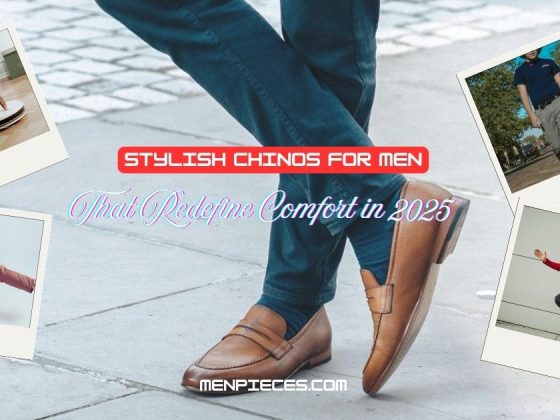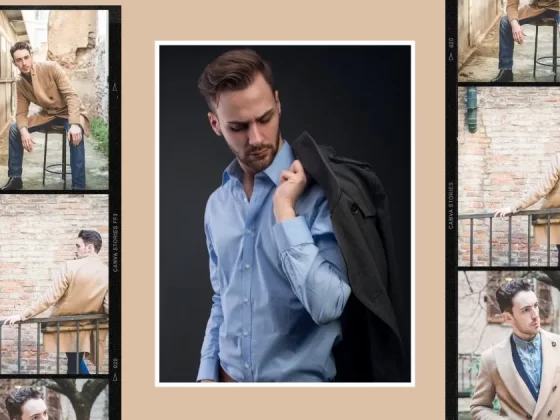Understanding Patterns: The Foundation of Confident Mixing
Before exploring pattern combinations, it is essential to understand the various types of patterns available and their interactions with each other. Patterns are not just decorative; they carry personality and visual weight. Knowing the characteristics of different prints will help you harmoniously combine them.
- Stripes: Stripes are a classic, versatile design that can be adapted for both casual and formal outfits. Horizontal stripes create a more relaxed look, vertical stripes elongate your frame, and diagonal stripes add dynamic movement. Stripes pair well with florals, polka dots, and geometric patterns. For example, a vertical striped blouse paired with a small floral skirt can elongate the torso while keeping the outfit lively.
- Polka Dots: Polka dots bring a playful and retro charm. Smaller dots pair well with larger patterns for contrast, while oversized polka dots can act as a statement piece. For instance, a large dotted coat over a subtle striped dress creates visual interest without overwhelming the eye.
- Checks and Plaids: These structured patterns add a grounded, orderly feel. Gingham or tartan can be casual or preppy, depending on color choices. Pairing plaid with floral or geometric prints can create a balance between rigidity and softness. For example, pairing a plaid blazer with a floral top creates a mix of structure and romance.
- Floral Patterns: Florals are soft, organic, and eye-catching. Small, delicate florals work well as layering pieces, while bold, oversized blooms are perfect for statement skirts or dresses. Florals pair well with stripes, dots, and abstract prints, especially when a single color is shared across multiple patterns.
- Animal Prints: Leopard, zebra, and snakeskin patterns convey confidence and a modern edge. Pairing animal prints with neutral solids is the safest approach, but they can also harmonize with stripes, geometric shapes, or muted florals for a daring look. For instance, leopard shoes can complement a striped dress in coordinating tones.
- Geometric and Abstract Prints: These patterns are contemporary and visually striking. They can contrast florals and soften structured plaids. Angular shapes and asymmetrical designs are excellent for creating an elevated, modern aesthetic. Pair geometric patterns with subtle florals or monochrome stripes for a chic effect.
Understanding patterns and their personalities is the first step to building confidence when mixing them. Each type conveys a mood, and combining them intentionally creates a narrative for your outfit.
8 Confident Ways to Mix Patterns Like a Fashion Pro
Start with a Neutral Base
Neutrals provide a safe foundation for experimenting with patterns. Neutral tones allow prints to stand out without clashing, making transitions between casual and formal looks effortless.
- Black, White, and Gray: Perfect for bold contrasts, such as a black-and-white striped shirt with a floral skirt containing white accents.
- Beige, Tan, and Brown: Warm neutrals harmonize with autumnal florals, plaids, and soft geometric prints. A beige plaid blazer paired with a floral blouse creates a balanced yet stylish look.
- Navy and Olive: These deeper tones work as anchors for brighter or busier patterns. Pair a navy checkered skirt with a muted polka dot top to balance energy and sophistication.
Starting with neutral bases also allows you to experiment incrementally. For example, start by introducing one patterned piece into a neutral outfit, then gradually combine it with another print in the same color family. This reduces risk and builds confidence in your styling choices.
Pair Patterns of Different Scales
Scale is critical when mixing patterns. Combining patterns of varying sizes creates visual balance, preventing outfits from looking chaotic.
- Large + Small: Pairing a bold floral print with subtle stripes ensures that the larger print dominates while the more minor pattern complements. For instance, a maxi floral skirt can be paired with a pinstriped blouse for a balanced look.
- Medium + Small: Medium-scale plaids or geometrics work well with delicate florals or tiny polka dots. A medium-checkered coat paired with a small, dotted scarf introduces complexity without overwhelming the senses.
- Avoid Same Scale: Wearing patterns of the same size can feel overly busy unless colors are intentionally harmonized. For example, two medium-scale floral patterns may clash unless their color palettes match precisely.
Scale provides hierarchy in an outfit, directing the eye and ensuring patterns do not compete for attention.
Use Color as a Unifying Factor
Color coordination is the backbone of successful pattern mixing. Look for shared colors across prints to create a unified outfit.
- Match Common Colors: If your floral dress features navy and pink, pairing it with a navy striped blazer helps maintain cohesion.
- Monochromatic Approach: Stick to a single color family to mix multiple patterns effortlessly. For instance, layering light blue stripes, florals, and geometric patterns creates a harmonious monochrome look.
- Accent Colors: Introduce small elements in accessories or shoes that echo the color of another print. A mustard polka dot scarf with a floral dress containing mustard tones ties the look together subtly.
Using color as a unifying factor ensures that even bold or unexpected pattern combinations appear deliberate and stylish.
Balance Bold with Subtle
Balance is key when mixing prints. Overloading an outfit with bold patterns can be visually overwhelming.
- Statement Piece + Subtle Prints: Pair a bold animal print coat with a muted striped or floral underlayer. The eye is drawn to the statement piece while the subtle print adds texture.
- One Bold, One Neutral: Pair a patterned shirt with solid pants, or a patterned skirt with a neutral top. Solids act as breathing space and prevent visual chaos.
- Layering with Care: When layering patterns, start with subtle pieces closest to your body and build outward with bolder prints. A delicate, dotted blouse paired with a striped blazer creates depth while maintaining a sophisticated look.
Balancing bold and subtle patterns ensures that your outfit remains readable and stylish rather than chaotic.
Mix Patterns with Similar Themes
Thematic harmony simplifies pattern mixing. Patterns with complementary narratives naturally pair well.
- Nature-Inspired Patterns: Pair floral and leafy prints to create a cohesive natural theme. For example, a leaf-print skirt with a floral blouse feels fresh and intentional.
- Geometric + Linear Motifs: Modern geometric prints pair well with angular patterns or structured plaids for a contemporary look.
- Nautical Themes: Stripes, anchors, or wave prints naturally pair with one another. For instance, a striped top with subtle anchor-patterned shorts evokes effortless coastal style.
Following a theme allows your patterns to tell a story, making your outfit appear curated rather than random.
Experiment with Textures
Textures add depth, richness, and sophistication to the art of pattern mixing. Combining different textures alongside prints creates multi-dimensional, fashion-forward outfits.
- Silk and Wool: A soft silk floral blouse under a structured plaid wool blazer balances fluidity with structure.
- Knit and Cotton: A chunky knit sweater paired with a striped or polka dot cotton shirt creates tactile contrast.
- Leather or Denim Accents: Pairing patterned jackets or skirts with leather or denim adds an edgy and modern touch.
Textures serve as an additional layer of visual interest, elevating your outfit beyond just color and pattern.
Accessorize with Patterned Pieces
Accessories allow a subtle introduction of pattern mixing without overwhelming your outfit.
- Scarves and Ties: A patterned scarf or tie in complementary colors adds sophistication and a touch of flair.
- Shoes and Bags: Shoes with animal print or geometric patterns can enhance an otherwise simple outfit.
- Jewelry: Geometric or etched jewelry can echo other patterns for continuity.
Starting with accessories is a great way to practice pattern mixing in a controlled way before moving on to full outfit combinations.
Confidence is Key
No matter how carefully patterns are combined, the secret ingredient that elevates any outfit is confidence. Pattern mixing can feel intimidating at first, but the most stylish and memorable looks come from people who are willing to experiment and fully own their choices. Wearing patterns boldly communicates personality, creativity, and individuality, and when you wear them with conviction, others notice immediately.
- Start Small: If you are new to pattern mixing, begin with one patterned piece in an otherwise neutral outfit. A striped scarf, a polka-dot blouse, or a floral skirt can serve as a gentle introduction to mixing without feeling overwhelming. Gradually, as your confidence grows, start combining a second or even third pattern in complementary colors or scales. This step-by-step approach allows you to build your pattern-mixing skills without feeling self-conscious.
- Draw Inspiration: Look to fashion magazines, runway shows, street style photography, and social media for practical examples of successful pattern combinations. Observe how professionals and influencers balance bold prints with subtle textures, unify colors, or play with scale. Take note of combinations that resonate with your style, then experiment by adapting these ideas to your wardrobe.
- Trust Your Instincts: Fashion is ultimately subjective, and your personal taste is your best guide. If an outfit makes you feel confident, stylish, and comfortable, it will appear that way to others. Don’t overthink rules or fear judgment. When you wear patterns with self-assurance, your presence completes the look.
Pattern mixing is more than a trend; it is a form of self-expression. The more comfortable you become with experimenting, the more effortless and natural your outfits will look. Confidence transforms even daring or unconventional combinations into cohesive, stylish statements that reflect your personality and creativity.
Mastering the Art of Pattern Mixing
Mixing and matching patterns confidently involves understanding the types, scales, colors, textures, and balance of patterns. Starting with neutrals, pairing patterns of different scales, using color as a unifying factor, and balancing bold with subtle prints ensures harmony and style. Accessories and textures enhance depth, while thematic consistency and confidence bring cohesion. With practice and intentionality, pattern mixing transforms your wardrobe into a creative, eye-catching playground, making even the simplest outfits stylish and memorable.




